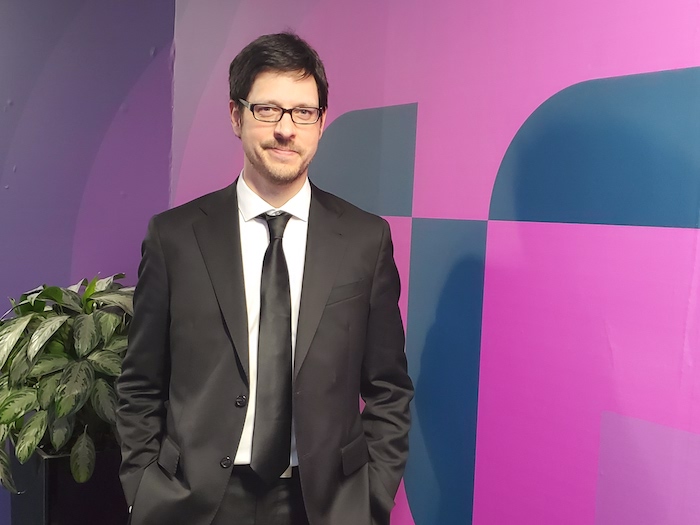
Conversation: Digital twins in health care
December 13, 2023
By CCE
Jean-Pierre Rivard is the lead building information modelling (BIM) manager at AtkinsRéalis (formerly SNC-Lavalin), which has used digital twins—i.e. virtual replicas of physical systems, with predictive analytics and simulation capabilities based on real-time data collected by sensors—to help identify flaws and solve problems for transportation infrastructure and industrial projects. Now, he sees an opportunity for the same technology to benefit health-care facilities, as they face increasing pressure to optimize efficiency.
What’s your background with digital twin technology?
I’m a mechanical engineer and my team is mostly working on the design side. We’ve been using 3-D models—which are mandatory in Quebec for major projects—for quite a few years. We take our client’s requirements and pump them into the 3-D model, to make sure whatever is being designed meets those criteria.
More and more clients are asking us to add components to our models relating specifically to the operation of their facilities. This is where we see the next step: organizing these models to be used by operations and maintenance (O&M) staff. We have to find a way to get these people on board when we design buildings, so we can get their feedback and ensure a digital twin provides information that can help them complete daily tasks and plan maintenance.
We’ve already been using models to this extent in some industries, but not yet in health-care facilities, where we know there would be benefits with a proper digital twin, because we have operated some of these facilities ourselves.
Why has health care been slower to adopt digital twins?
Many hospitals are aging and complex. And there are lots of people to convince this is the way to go. We need to leverage our past experience from other industries to show how we can help these facilities become more efficient, by using 3-D models to train operators before they’re on-site.
With a new facility, you can add the sensors as you build, which is more cost-effective than in an existing facility, where it would carry an additional expense. That said, the maintenance routine for a new facility may not be known yet. The way we design the building should show we understand how people will operate it.
Why is that important in health care?
When a mechanical system fails, you lose your ability to treat people and you might have to send them to another hospital. I’ve seen this happen to members of my family. We need to spot potential failures before they happen.
New standards require sections of the building that can be converted into pressurized zones when there’s a pandemic or a fire. The ability to secure such areas is something we can model.
The same is true for preventing fires. We commonly use 3-D models to simulate smoke generation to make sure ventilation systems are designed in the right way to get the smoke out.
I worked on a hospital site a few years ago where, as people came in to work in the winter, the entrance doors were open from 7 to 10 am. The temperature inside would drop and it got to the point where people complained they were always cold. The wind was coming in one side and going out the other, so the whole hospital was acting as a wind tunnel. We used digital twin data to reconfigure the entrance.
That kind of analysis can be applied to any facility for which we can build a geometric representation. If the model is built right, you can access information to help make sure O&M staff is working at the right place at the right time.
We have to understand people are working in a very difficult environment, with shortages of staff and beds. They’re probably overwhelmed at the moment and can’t see everything that’s going on. So, the challenge is how O&M can become more proactive, rather than reactive.
A small improvement in how we do things can create a direct benefit. We have to get everyone involved in the digital twinning process, including clients, operators, constructors. Then we can help support the best care for patients.
